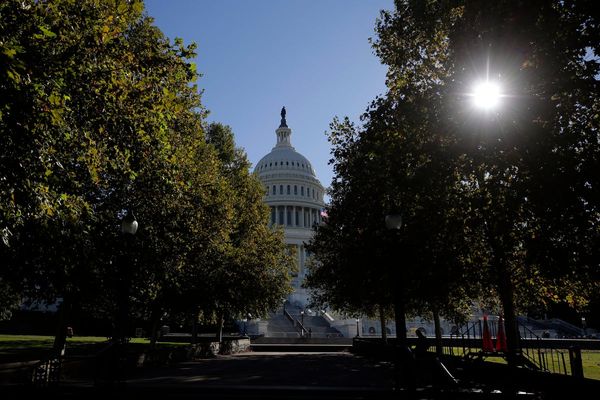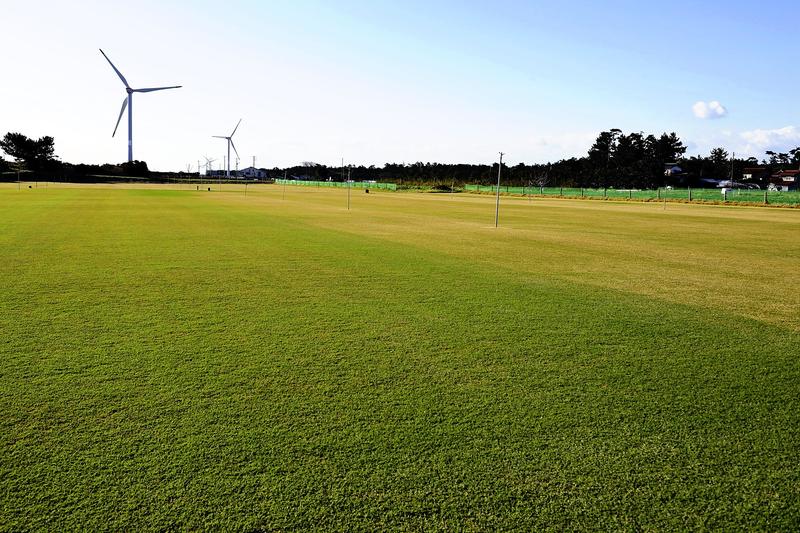
While the 2019 Rugby World Cup in Japan that electrified the people across the country is still fresh in our memory, the year of the 2020 Tokyo Olympics has begun. With that in mind, an essential component for exciting scenes during an outdoor sporting event is a lawn of good quality that will suitably support the footing of athletes.
Tottori Prefecture is a leading producer of lawn grass in Japan -- top-rated in the country, in fact. The high quality lawn grass that is grown in the prefecture has also been chosen for the pitch of the new National Stadium in Tokyo.
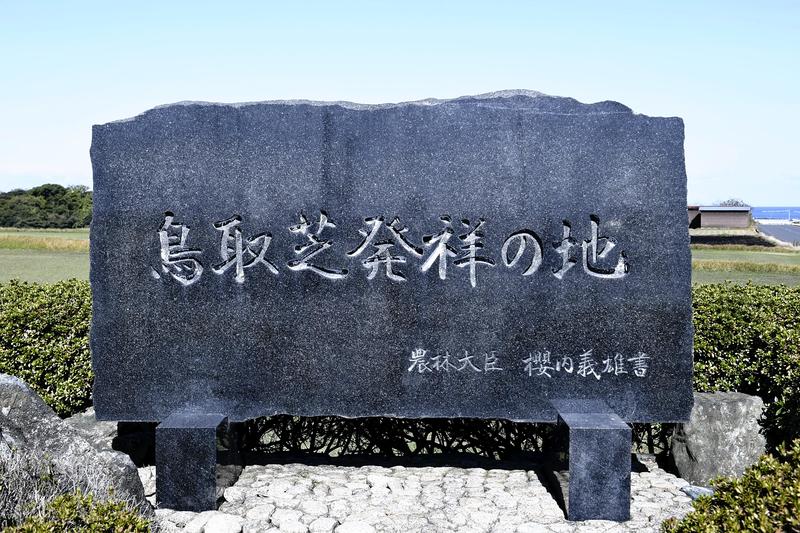
From Tottori to Tokyo
"Having our lawn grass chosen to be used at the new National Stadium is like being selected as a national representative. It is quite an honor," Shinichi Sakade said proudly. Sakade is the manager of the department of greening materials at Chubu Co., a grower and seller of lawn grass in Kotouracho located in the middle of the prefecture.
It was in November 2018 that the lawn grass produced by Chubu was selected as the one to be used for the new National Stadium, which is located in Shinjuku Ward, and will become the main venue for the 2020 Tokyo Olympics and Paralympics.
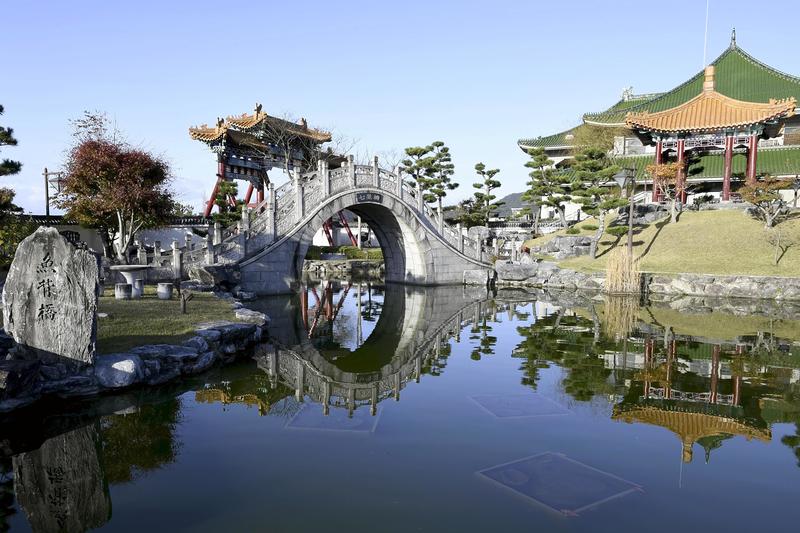
Officials in charge of the selection went all the way to Tottori Prefecture to inspect one of the company's grass fields and rated it of high quality, including its cushioning characteristics.
Chubu has grass fields that total 210 hectares, including those in Kotouracho, Yurihamacho and Hokueicho in the prefecture. It grows grass for specific usage, such as for stadiums, golf courses and parks, then ships them out accordingly. Its grass was also used for the 2019 Rugby World Cup, including one for the pitch of the Tokyo Stadium in Chofu, Tokyo, where such matches as the quarterfinal between Japan and South Africa were held. Chubu's lawn grass was selected for the Kumagaya Rugby Stadium in Kumagaya, Saitama Prefecture as well.
If a pitch is covered with grass that has weak roots, the lawn would become loose and peel away, likely leading to injuries among athletes. But as Chubu's lawn grass takes root deeply and extends widely, it stays put during matches.
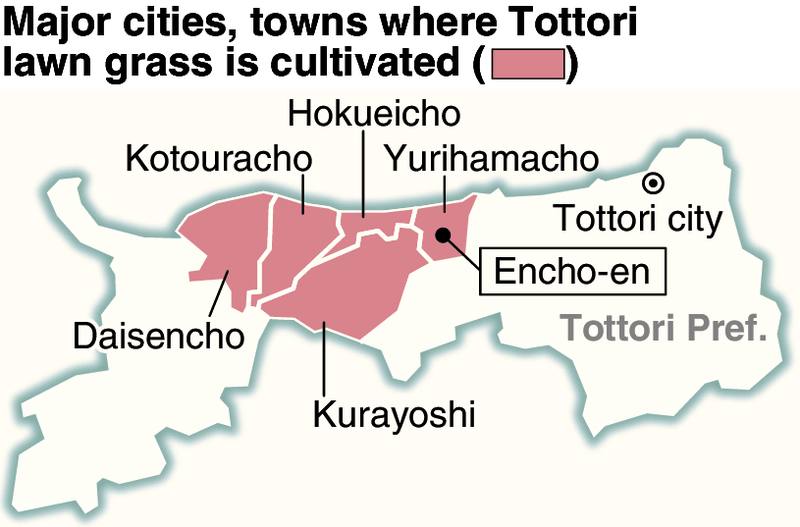
Shoji Ikeda, 67, president of Office SHOW, a company that manages the lawn at the Tokyo Stadium, recalled, saying: "Although the Rugby World Cup schedule was tight, the lawn was easy to tend and had little damaged. We were able to provide the players with the best pitch conditions."
Volcanic soil
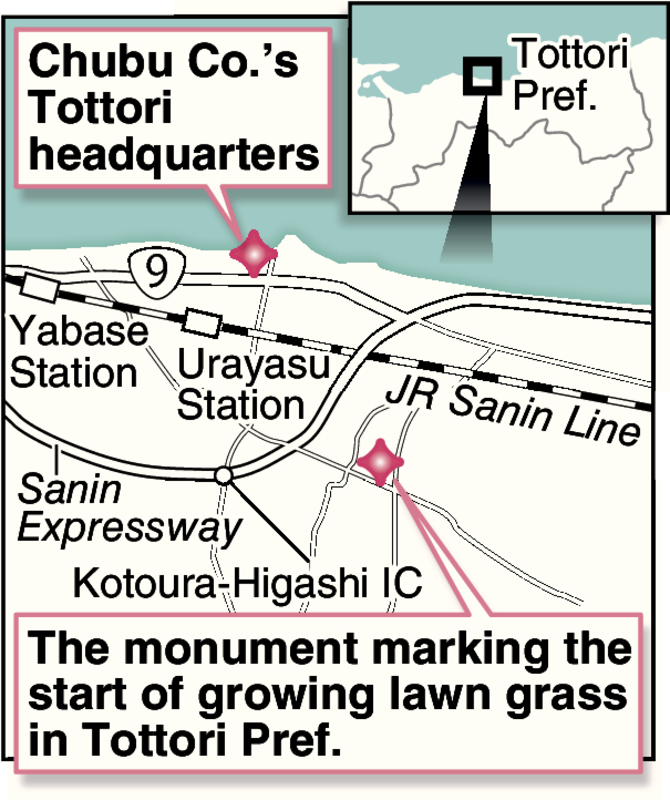
The history of lawn grass grown in Tottori Prefecture is relatively new. It started in Kotouracho in 1958.
Back then, the production of sweet potatoes was thriving in response to a food shortage in post-war years. As the circumstances surrounding food supplies improved in later years, the price of sweet potatoes dropped. And it was lawn grass that local farmers had an eye on as a way to increase their earnings.
Furthermore, andosols, soils made of volcanic ashes on Mt. Daisen that stretches out in the middle of the prefecture, drain well and are suited for culturing lawn grass. As the demand for lawn grass grew sharply at the time of the 1964 Tokyo Olympics, the area planted with lawn grass greatly expanded. Local public administrators also paid attention to lawn grass, and the Tottori prefectural government, local grass growers and others jointly established a council, with an aim to grow lawn grass as a local specialty.
Due to the joint efforts amassed in the research on improving the quality of lawns by both the public and private sectors, their grass became highly rated as it grows free of weeds and looks beautiful. Also, riding a tailwind of rising demand for developing golf links due to the boom of the bubble economy, the area for lawn grass growth expanded even more, reaching a peak that totaled 1,511 hectares in 1994.
Cutting costs
After the burst of the bubble economy, however, the planted area decreased, falling to as low as 616 hectares in 2010. But it recovered to 823 hectares in 2017, an upturn partly due to the so-called "Tottori system," a formula developed in 2003 for the maintenance and management of lawn grass.
The method was proposed by Green Sports Tottori, a nonprofit organization in Tottori. Under its method, seedlings of lawn grass cultured in pots are planted at certain intervals, with the lawn grass grown without weeding. This method reduces the execution, maintenance and management expense to less than half of what they would normally cost.
As the adoption of such grass spread, for instance in school grounds, a total area of about 5.56 million square meters at about 3,400 locations across the country had been turned into lawns by the end of 2018.
Akinori Nakamoto, 57, chairman of the liaison council of lawn growing instructors in the prefecture, said: "The culturing of lawn grass was one that was launched by trial and error, it has been improved and has reached such a level that people across the country want it. We'd like to pass the technique down to the next generation."
I wonder what sorts of exciting scenes the top athletes of the world will demonstrate on the lawn grass from Tottori.
-- How to get there
The cultivation of lawn grass in Tottori Prefecture started on about one-hectare field in Kotouracho, which is surrounded by lush fields of grass even today. A monument commemorating the start of lawn grass cultivation in the prefecture stands at the cross-section along prefectural roads, which is accessible by a three-minute car drive from the Kotoura-Higashi Interchange of the Sanin Expressway. Besides those in Kotouracho, fields of lawn grass also spread in Hokueicho, Yurihamacho and Daisencho, which can be seen while driving along the roads.
-- Extend your trip!
Encho-en
The gardens of Encho-en, opened in 1995 as a symbol of friendship between Tottori Prefecture and Hebei Province, China, are one of the largest, full-fledged Chinese-style gardens in Japan. In an area of about 1 hectare, gardens designed in the style of an Imperial Chinese garden -- cherished by successions of emperors in China -- have been reproduced. In recent years, events held at the gardens such as a cosplay gathering featuring games and manga characters have also become popular. With a Michi-no-Eki roadside facility with souvenir shops and car-parking lots, operating together with Encho-en, there are also restaurants available where visitors can enjoy authentic Chinese dishes.
Read more from The Japan News at https://japannews.yomiuri.co.jp/

